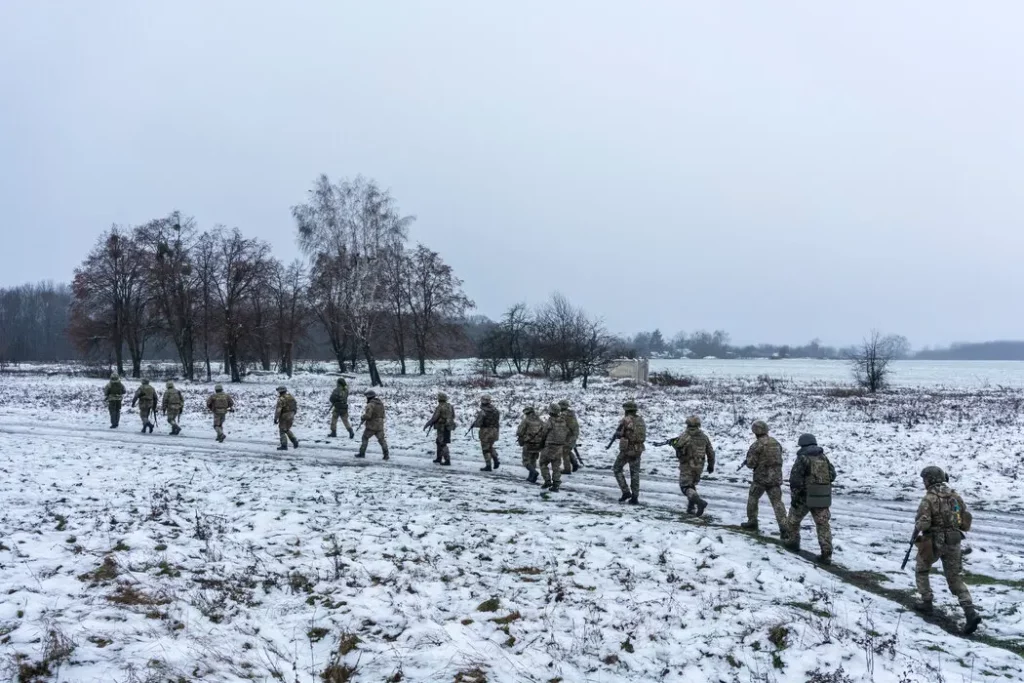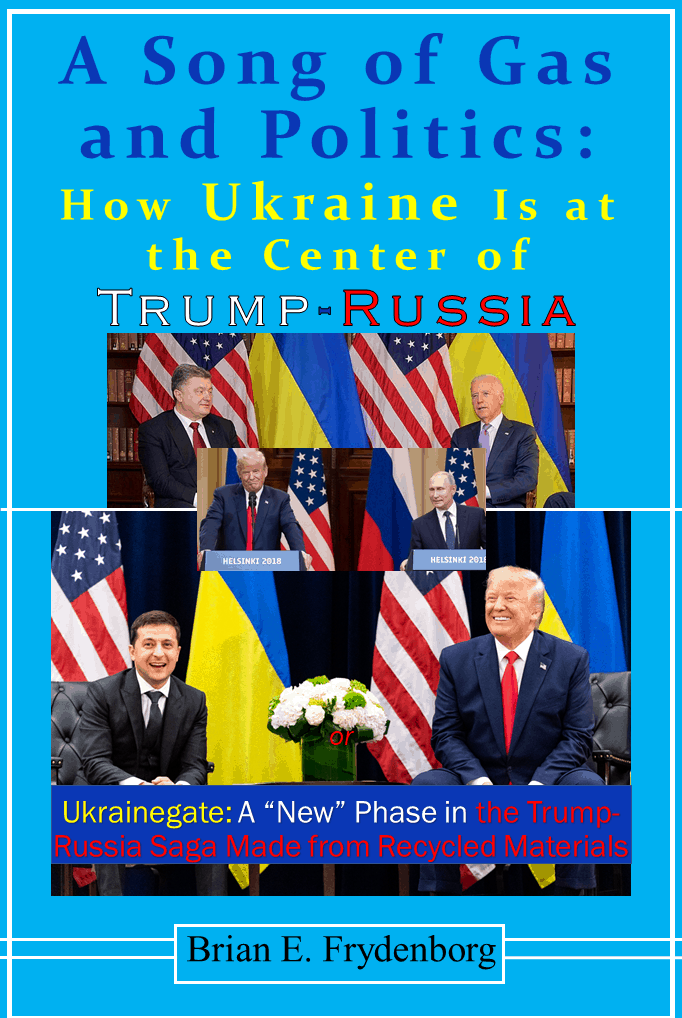Winter is coming, but it won’t affect Russia and Ukraine equally in this war
(Russian/Русский перевод; Если вы состоите в российской армии и хотите сдаться Украине, звоните по этим номерам: +38 066 580 34 98 или +38 093 119 29 84; инструкции по сдаче здесь)
By Brian E. Frydenborg (Twitter @bfry1981, LinkedIn, Facebook) November 28, 2022; republished by Small Wars Journal January 1, 2023, as Uneven Snows: Why Winter Will Hurt Russia’s Military Far More Than Ukraine’s, in turn discussed by SOF News on January 31

SILVER SPRING—There is much Conventional Wisdom out there that the coming winter will mean major combat operations will halt in Ukraine and a general pause in the war, that winter means windows and opportunities will close for Ukraine or that Ukraine is somehow at a disadvantage once winter sets in. Before Ukraine retook Kherson City, you could easily find commentary that Ukraine needed to rack up victories before the winter sets it, that, somehow, winter would force Ukraine or both sides to dig in and regroup and await a thaw for a return to bigger battles.
The ubiquity of such commentary is only matched by its level of inaccuracy (though in recent weeks, it seems more people are realizing this, but this should have been clear even earlier).
Firstly, historically, from the Napoleonic Wars through World War II in even colder climates in Eastern Europe than Ukraine (just to name a few centuries), winter has not meant an end to major fighting in this part of the world. From the Napoleonic river-crossing Battle of the Berezina at the end of November 1812, to the Battle of Suomussalmi in Finland in late 1939 to through 1940, to Stalingrad in Soviet Russia in late 1942 through early 1943, major battles have been fought in the modern era in this region in the middle of winter. In two of those, the Russians were fighting on their territory against an invader, whom they bested in the fighting, but in another, they were humiliated as invaders by the defending Finns. Today in Ukraine, as in the case with that Battle of Suomussalmi (and as I pointed out in an earlier piece), the Russians are again the invaders and again being humiliated.
Secondly, in a war in Ukraine today that has been defined by the high quality of Ukraine’s military and the inferior quality of Russia’s military, the smarter bet would be that Ukraine’s military would see its higher morale, far-larger degree of care paid to its individual soldiers, better training, superior equipment, and more developed logistics weather the challenges of winter skillfully relative to Russia’s forces with low morale, callous disregard for their soldiers’ lives, rushed-training, dilapidated equipment, and miserable logistics. If anything, winter can be thought of as something that will exacerbate the current performance gap between the Ukrainian and Russian militaries, which is already considerable: the challenges of winter will have much less of a negative effect upon Ukraine’s better fighting force than Russia’s struggling mess of a military, and few militaries in recent conflicts have demonstrated these contrasting qualities as well as Ukraine and Russia, with devastating effects for Russia was during the far warmer spring, summer, and fall months in Ukraine.
It was during these warmer months when Russia suffered stunning and historic reverses on the battlefield, losing horrific amounts of men and massive amounts of occupied Ukrainian lands—first outside Kyiv, Sumy, and Chernihiv, then in Kharkiv, Izyum, Lyman, and Kupiansk, and now in Kherson—losing thousands of square miles of territory and, for much of this period, suffering repeated massive setbacks far behind the front lines throughout the Donbas and the south and even in Crimea, from packed headquarters full of officers being destroyed to airfields and even the Crimean/Kerch Strait Bridge being heavily damaged (the latter of which I had been predicting since April). Ukraine also keeps damaging the Russian Navy even though it barely has a navy of its own.
If this was how badly Russian forces fared in the less harsh weather of the non-winter months, we should expect an even worse performance by the Russians during this winter, exposing them to even more disasters.
Why?
Think about what is most at risk during winter months.
For one, there are the issues of health, sanitation, and disease. Armies that take good care of their individual soldiers—that have good relationships between officers/NCOs and enlisted, with well-trained and well-resourced medics, with care taken to properly clothe, warm, and clean troops—fare much better in winter conditions. Preventable cases of frostbite, trench foot, and hypothermia are just that: preventable. Here, as noted, Ukraine has a huge edge, especially with its developed NCO (non-commissioned officers, such as sergeants) corps, as retired U.S. Gen. Mark Hertling has noted.
For another thing, morale can get much worse for troops in winter months with colder, wetter, darker conditions, especially for troops that are not well-outfitted nor well-provisioned. Here, again, Ukraine has a huge advantage over Russia’s sad efforts.
There is also the maintenance of weapons and equipment, which, already without winter conditions, needs leadership, training, and steady supplies of certain resources (like lubricants and replacement parts) and needs these all even more during winter conditions. A better army in the winter is often one that is properly maintaining its weapons and vehicles in the cold weather; those that do not will find their weapons break down and become unusable, leading to disaster. Twenty men with functioning weapons and vehicles can easily smash through 100 men with frozen vehicles and weapons that will not fire.
Furthermore, combined arms tactics, coordination, and communication also become more important: as storms, clouds, and snow reduce visibility, the ability to reach out for and receive help rapidly from nearby and other types of forces is even more important because of the challenges and limitations of winter. Better care and resourcing for wounded soldiers and rapid medevacs and resupplies from helicopters and mechanized units can become even more important in the extreme weather. This has resulted in multiple major combined-arms breakthroughs on major fronts for Ukraine, which, time and again, has shown superiority over Russia in these spheres as the war keeps progressing.
Thus, rather than expect a both-sides-lull, expect the plucky Ukrainians—who time and time again have exceeded both Western and Russian intelligence estimates of their capabilities—to capitalize on their comparative advantages and to be able to strike serious blows against Russia during this winter, when Russia’s deficiencies will only be magnified, making Russia its weakest relative to Ukraine and ripe for further battlefield defeats, the winter weather actually playing to Ukraine’s qualitative and technological advantages.
To be clear, Ukrainian civilians in combat zones and facing power shortages after Russia’s war-criminal strikes against Ukraine’s civilian power infrastructure face the gravest of threats to their survival from the winter weather, and the international community should do everything it can to assist and evacuate them where they can. But when it comes to the two armies, Ukraine’s will fare much better against the winter elements than Russia for all the reasons outlined above, and its steady stream of successes against their Russian invaders will only continue during these winter months as a result. As Ukraine has in every phase throughout the war, it will continue to surprise many of us and, especially, the Russians, even in the cold of winter.

See all Brian’s Ukraine coverage here
Brian’s Ukraine journalism has been praised by: Mykhailo Podolyak, a top advisor to Ukrainian President Volodymyr Zelensky; the Ukraine Territorial Defense Forces; Scott Shane, two-time Pulitzer Prize-winning journalist formerly of The New York Times & Baltimore Sun (and featured in HBO’s The Wire, playing himself); Rep. Adam Kinzinger (R-IL), one of the only Republicans to stand up to Trump and member of the January 6th Committee; and Orwell Prize-winning journalist Jenni Russell, among others.
© 2022 Brian E. Frydenborg all rights reserved, permission required for republication, attributed quotations welcome
Also see Brian’s eBook, A Song of Gas and Politics: How Ukraine Is at the Center of Trump-Russia, or, Ukrainegate: A “New” Phase in the Trump-Russia Saga Made from Recycled Materials, available for Amazon Kindle and Barnes & Noble Nook (preview here).

If you appreciate Brian’s unique content, you can support him and his work by donating here; because of YOU, Real Context News surpassed one million content views on January 1, 2023.
Feel free to share and repost this article on LinkedIn, Facebook, and Twitter. If you think your site or another would be a good place for this or would like to have Brian generate content for you, your site, or your organization, please do not hesitate to reach out to him!